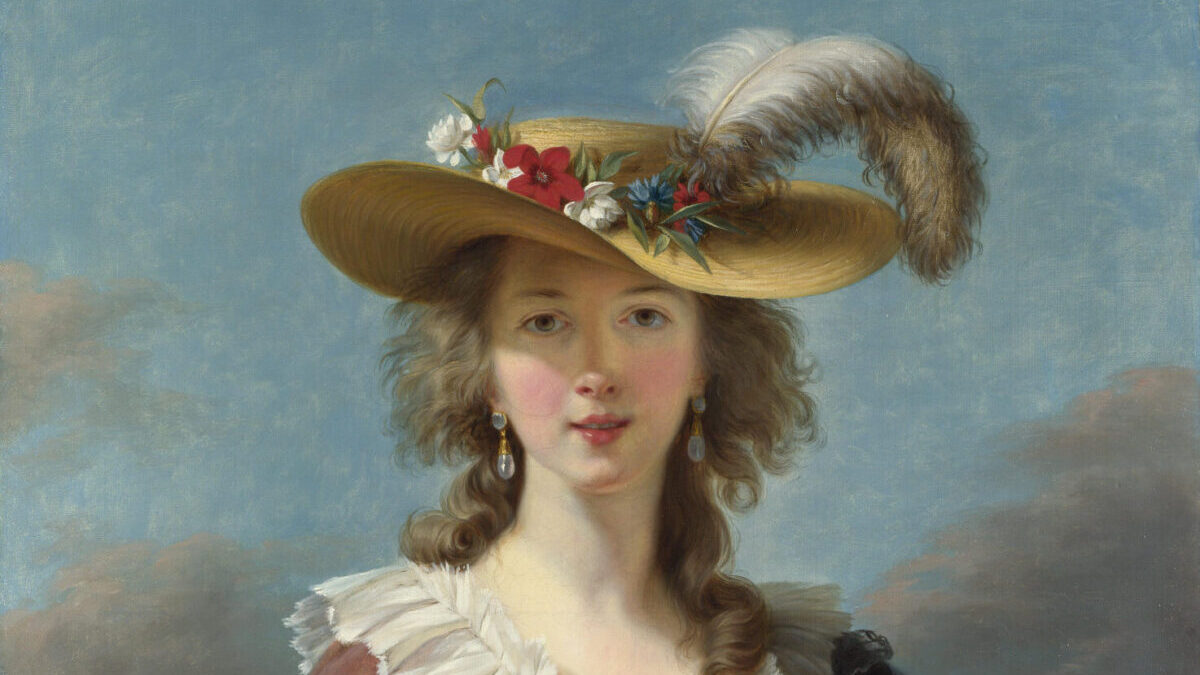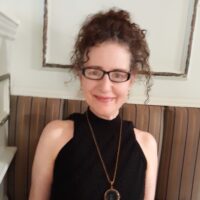“In my view — call it contrary or politically incorrect or simply dated if you like — art is about beauty,” Wilhelmina Holladay wrote in her 2008 memoir, “A Museum of Their Own, National Museum of Women in the Arts.” “Art reflects our shared humanity, the traits, talents, and qualities that make us human. Art transcends politics, gender, color, religion, age, and nationality. Art is the great unifier.”
The founder of the National Museum of Women in the Arts (NMWA), Holladay died in 2021 at the age of 98. Her centenary birthday this month presents the opportunity to celebrate her creation, an institution that champions the art of women. Not liberal or conservative women, or those who aligned with her particular politics or values. The National Museum of Women in the Arts was created to celebrate the art of all women.
The Washington, D.C., museum, which is closed for renovation until fall 2023, began in the early 1980s in Holladay and her husband Wallace’s Georgetown apartment. Visitors toured the couple’s private art collection and attended occasional lectures.
“The Women’s Museum — as we often called it informally, had become the cause that I would devote my life to,” Holladay wrote. “I had no intention of being distracted from that cause or allowing the Museum itself to be dragged into any political arena unnecessarily. On the contrary, I intended the Museum to welcome all comers, to be a uniting, cohesive, all-embracing organization, an umbrella for all.”
Art as a Unifier
This “arms open to all” approach is exactly what makes Holladay’s achievement so extraordinary. Especially in Washington, D.C., a town steeped in political perspective, where everyone seems to have an ideological agenda — hidden or otherwise.
True to her word, Holladay welcomed dignitaries from both sides of the aisle to the official ribbon-cutting ceremony at the museum’s new permanent home at 1250 New York Avenue. Effi Barry, wife of then-democratic mayor Marion Barry, and Barbara Bush, wife of then-vice president George Bush, both gave ceremonial speeches at the 1987 opening.
“The museum will enrich our city, our nation, and the lives of Americans for generations to come,” Mrs. Bush explained. “God bless the National Museum of Women in the Arts.”
Birth of an Idea
That ceremony punctuated the end of a long journey. Wilhelmina Cole moved to Washington in 1946 after graduating from Elmira College to work as social secretary to Soong Meling, wife of Chang Kai-shek. There she met Wallace Holladay, an architect. The couple soon married. They had many shared interests, including travel, an appreciation of food and flowers, and a passionate love of art. Like me, that passion was ignited by volunteering as a docent at The National Gallery of Art. It was during that time that she and her husband started collecting paintings.
After a trip to Europe, the Holladays returned home in search of information about the 17th-century Flemish artist Clara Peeters. Unable to find any, an idea was born: They would specialize in acquiring works of great female artists.
But simply collecting was not enough. Holladay felt that artistic women needed institutional representation, and committed herself to the concept of creating a museum devoted to their work. Identifying a suitable structure in the nation’s capital was a challenging task, until they discovered the old, abandoned National Masonic Temple at 13th Street and New York Avenue — just three blocks from the White House.
When purchased by the couple in 1983, the 76-year-old building had to be completely gutted and rebuilt. In her memoir, Holladay graciously credits her husband of 65 years with the entire process of designing and building the museum. “Let there be no doubt about one important fact: I could not have possibly developed the NMWA without the love, constant support, counsel, and inexhaustible good humor of my husband Wallace F. Holladay.”
While Wallace oversaw the major renovation (securing approval from the Masonic board and getting historic landmark preservation status took more than a year), his wife went to work finding early supporters.
Employing the Washington insider’s concept of “who you know,” Wilhelmina Holladay inspired women and men to join her in raising funds and interest for the new museum, across the United States and abroad.
Her talent to excite others about a museum for women artists garnered support from luminaries such as South African president Nelson Mandela. Princess Diana’s 1997 visit created so much havoc outside the museum that New York Avenue had to be closed down.
The couple stayed true to their vision of representing and welcoming women of all stripes. Their appreciation for female artists of 18th-century France led to the museum acquiring many paintings by French women, including Élisabeth Louise Vigée Le Brun (1755–1842), Adélaïde Labille-Guiard (1749–1803), and Anne Vallayer-Coster (1744–1818). In honor of her support of French female artists and scholarship, Mrs. Holladay was awarded the French Legion of Honor in 2006.
Innovative Exhibits
But she was by no means overly traditional. The museum produced many innovative exhibits, including “Julie Taymor, Playing with Fire” in 2000, a spectacular tribute to the woman behind the 1997 Broadway hit “The Lion King.”
Following that success, NMWA honored another American icon, Anna Mary Robertson Moses, with “Grandma Moses in the 20th Century.” In 2003, thanks to the Holladay’s relationship with Russia’s Hermitage Museum, NMWA created the show, “An Imperial Collection: Women Artists From the State Hermitage Museum,” which Holladay considered one of her and the museum’s greatest successes.
For me, what makes Wilhelmina Holladay so successful was her ability to appreciate art for art’s sake, not as a political or ideological vehicle. She trusted the artist, and the viewer, to form their own interpretation of what the painting, drawing, or sculpture signified.
As the painter James Whistler stated in his famous “The Ten O’Clock” lecture in 1885, art should be “independent of claptrap, it should stand alone and appeal to the artistic eye or ear.”
In these highly politically polarized times, we need more cultural and arts leaders with the vision and commitment of Wilhelmina Holladay.
The National Museum of Women in the Arts is closed for renovation until fall 2023. A lovely tribute to its founder can be seen online here.









